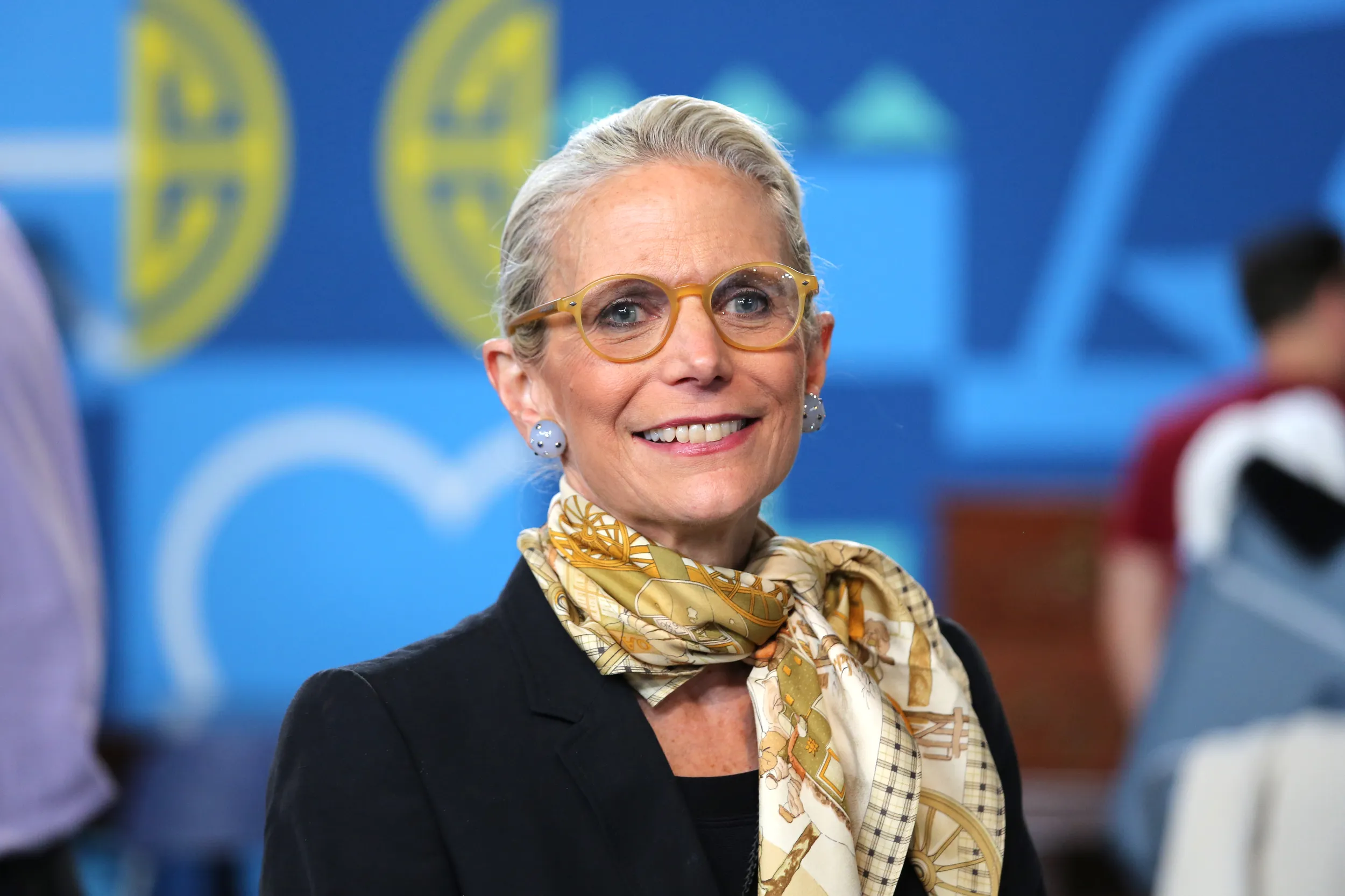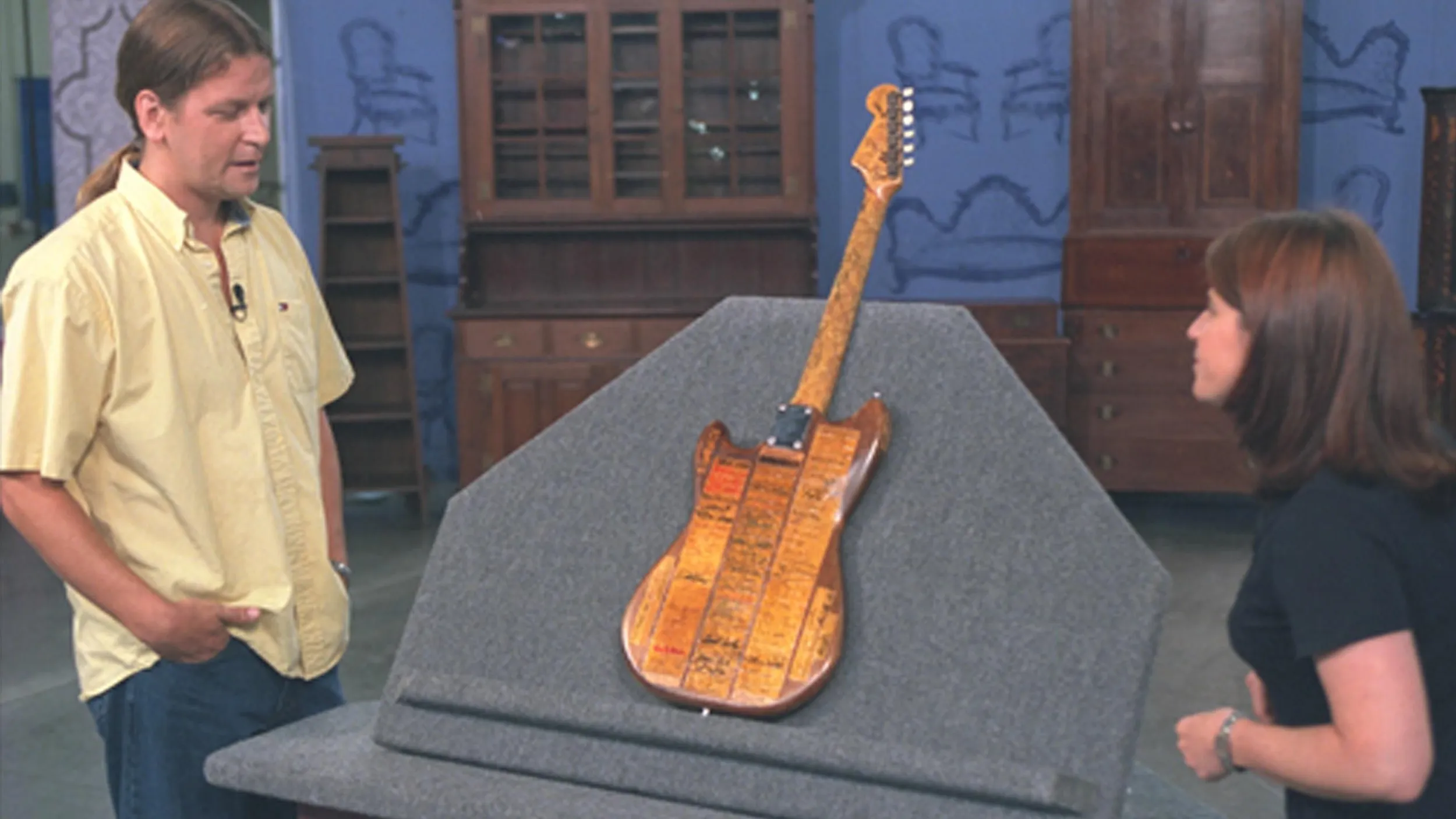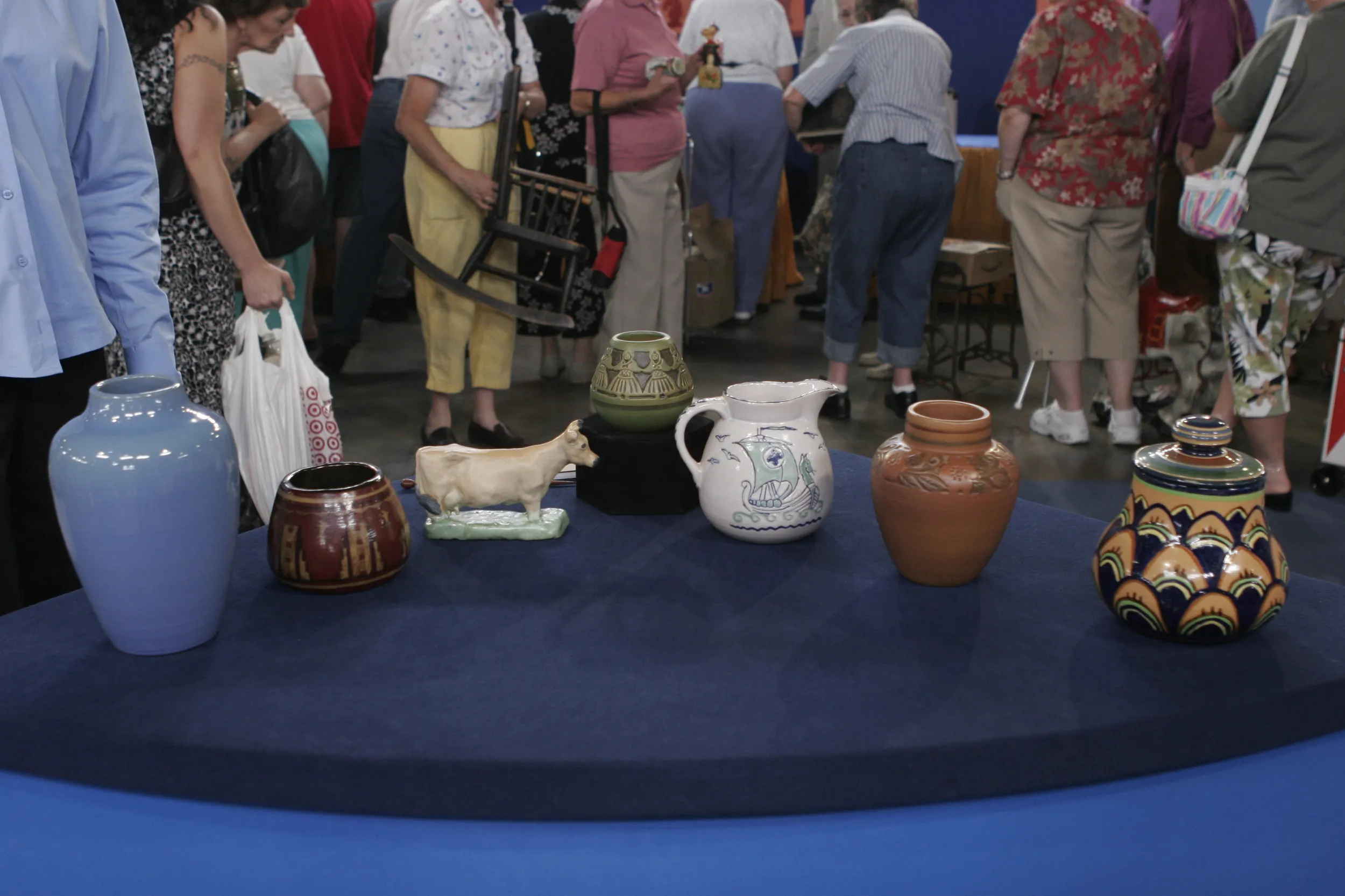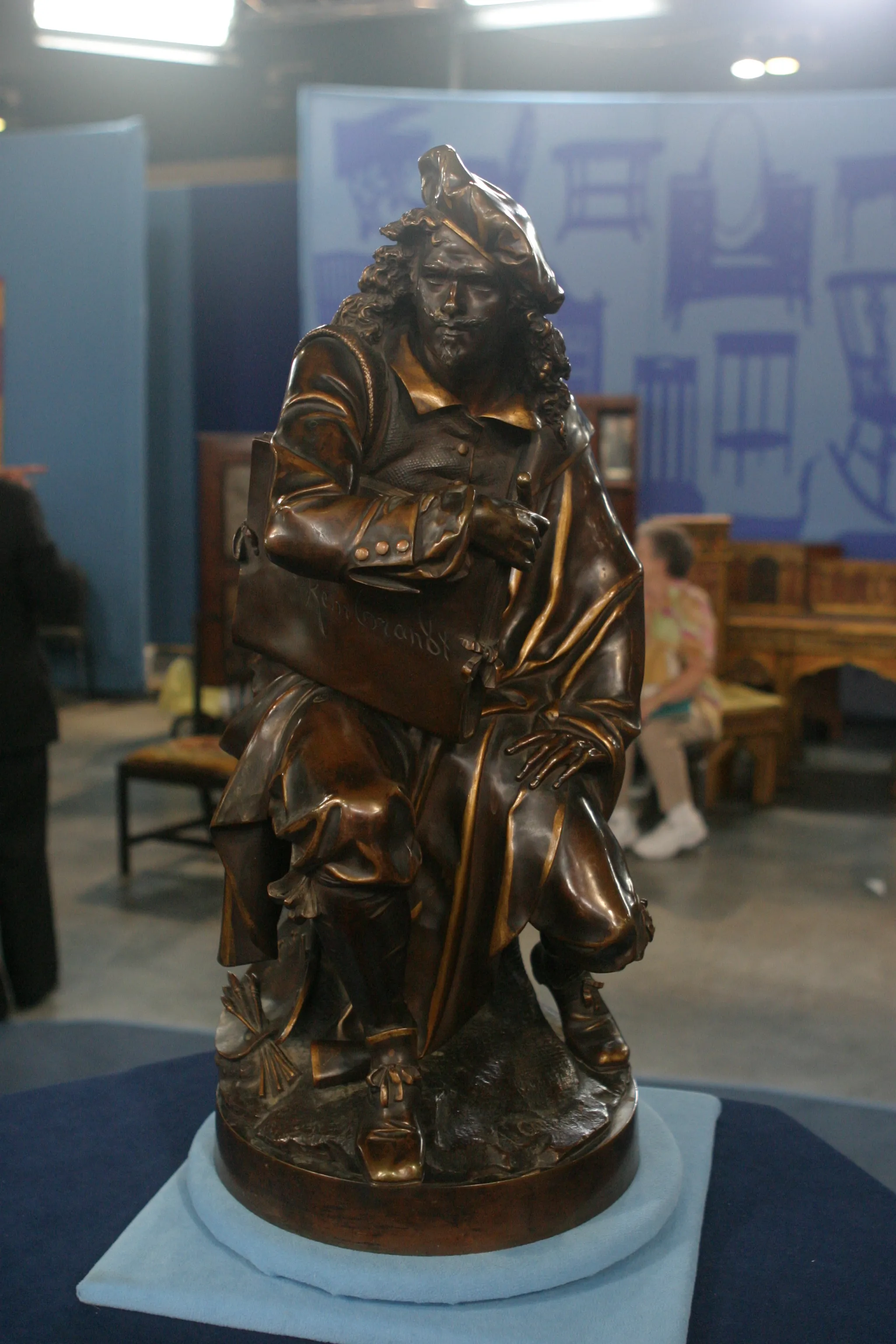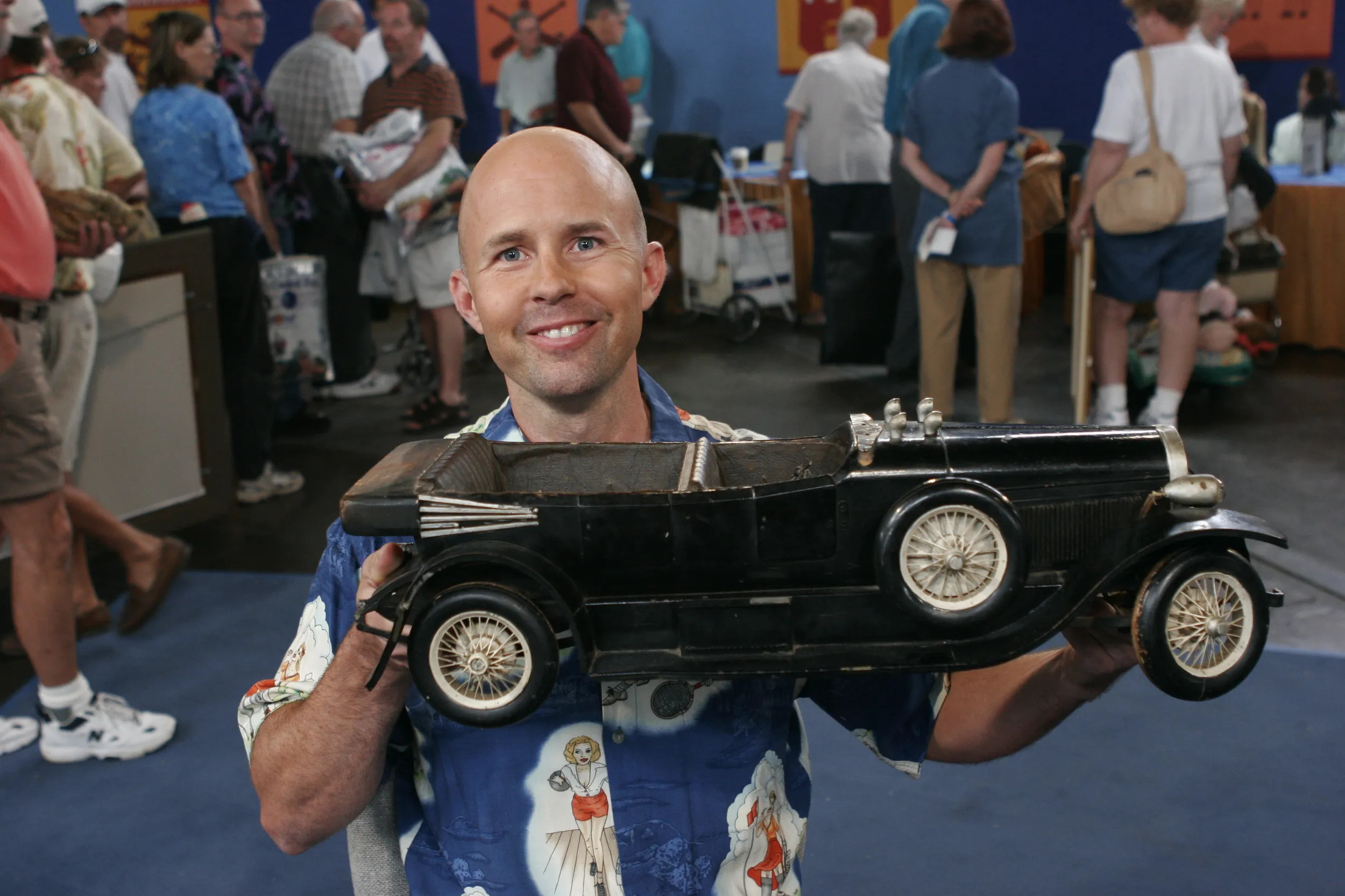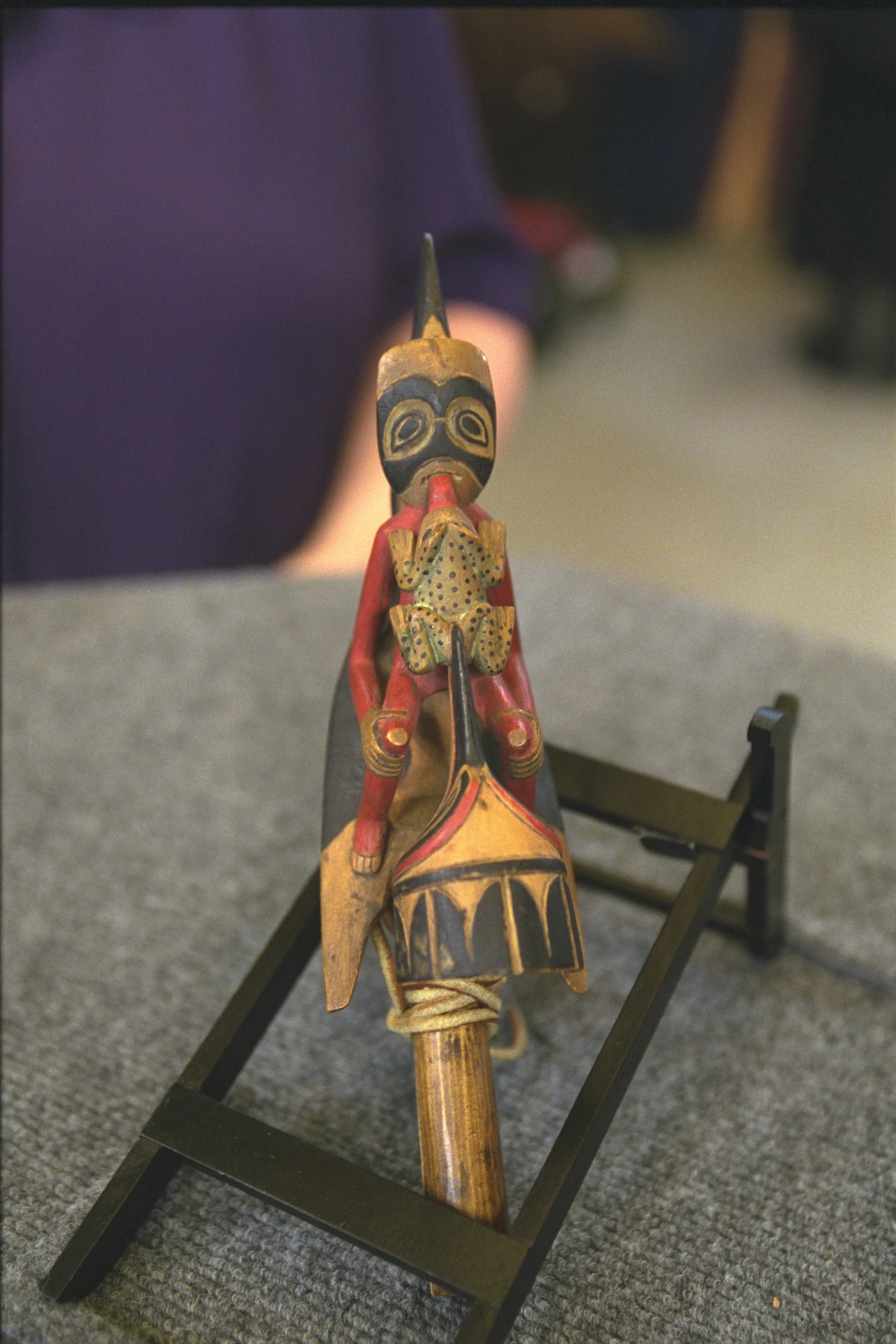GUEST: The decoys belonged to a neighbor of ours who passed away a few years ago. And they had an estate-type sale, and we purchased it from there. And I talked to his wife, and she said that he had the decoys when they were married in 1943.
APPRAISER: Yeah.
GUEST: And attributed to Charles Perdew.
APPRAISER: Right.
GUEST: I guess a rather well-known carver from the Illinois region. And evidently, his wife did the painting, or at times did some of the painting. I know they were never used in the water. They've always been used as a decorative-type thing in their home.
APPRAISER: Right, well, um... these are about the best decoys that I have seen. As you have been told, these are the work of Charles Perdew, who was born in Henry, Illinois, in 1874. And he worked in that area on the Illinois River for all of his professional career. And these, which are hen and drake mallards, are from his peak period of output, when he was really at the height of his powers. This is the hen, and she has got a sleepy eye. You can see the eye beginning to close a little bit. And Edna, Charles Perdew's wife, did, in fact, help with the painting. She was the better of the artists, between Charles and herself. This is actually by Charles, and the way that you can tell it is that the paint is applied in these sort of U-shape markings. She was much more refined and much more careful, and so the feathering is more feathery.
GUEST: So this would be his...?
APPRAISER: This is his work. But they're in mint condition. The paint is great. They're a lovely form. They've never been used. And so tell me what you paid for them at the auction.
GUEST: We paid $150 apiece for them.
APPRAISER: Okay, well, this pair of decoys, for the two of them, would be worth between $10,000 and $20,000.
GUEST: (chuckling) Oh. My son will be amazed.
APPRAISER: He will be amazed. "Sitting pretty," as we say in the duck business.
GUEST: Yes, that would be nice.
APPRAISER: They're wonderful.
